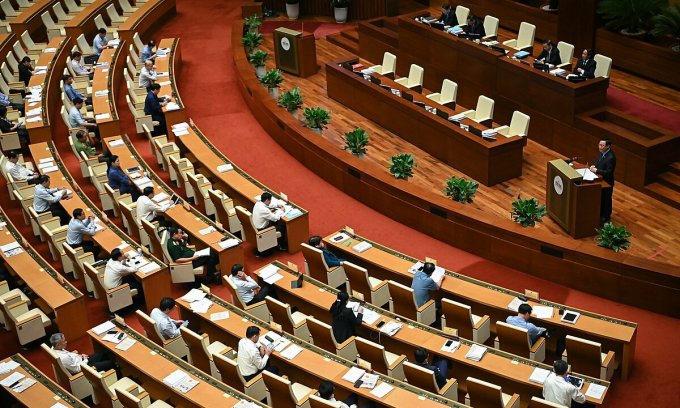How long does it take to change land use purposes in Vietnam?

“How long does it take to change land use purposes in Vietnam?” Do you who are directly implementing land use conversion know this information, or are you ready to make this administrative procedure more convenient and easier? Let’s find out with LSX in the article below.
Legal grounds
- Land Law 2013
- Decree 01/2017/ND-CP
- Decree 43/2014/ND-CP
What is land use change?
Change of land use purpose is a change in land use purpose compared to the original land type by administrative decision in case of change of land use purpose requiring permission or land registration in case it is not. to obtain permission from the competent state agency.
How long does it take to change land use purposes in Vietnam?
Article 61 of Decree 01/2017/ND-CP amending and supplementing Decree 43/2014/ND-CP as follows:
“Article 61. Time limit for carrying out administrative procedures on land
1. The time limit for carrying out procedures for land allocation, land lease or change of land use purpose is prescribed as follows:
a) Land allocation or land lease shall not exceed 20 days excluding the time for ground clearance;
b) Change of land use purpose within 15 days.”
Thus, according to the above law, the time to change the land use purpose is 15 days.
Procedures for changing the land use purpose of households and individuals
Pursuant to Article 69 of Decree 43/2014/ND-CP and guidance in Decision 2555/QD-BTNMT, the procedure is carried out according to the following steps:
- Step 1. Prepare documents
– Number of documents: 01 set
Profile composition:
Article 6 of Circular 30/2014/TT-BTNMT stipulates that the application for households and individuals includes the following documents:
+ An application for change of use purpose, made according to Form No. 01.
+ Certificate of land use right (Red Book, Pink Book).
- Step 2. Submit application
– Where to apply:
Option 1: The locality that has established a one-stop shop shall submit it to the district-level one-stop shop.
Option 2: If the locality has not established a one-stop shop, submit it directly to the Department of Natural Resources and Environment
– Receipt of dossiers: If the dossiers are incomplete or invalid, within 03 working days, the dossier-receiving and processing agency must notify and guide the applicant to supplement and complete the dossiers. edit the profile according to regulations.
- Step 3. Processing and resolving requests
– Department of Natural Resources and Environment is responsible for verifying the dossier; Field verification, assessment of the need for re-purpose.
– The Department of Natural Resources and Environment shall guide land users to fulfill their financial obligations as prescribed by law.
– The Department of Natural Resources and Environment shall submit to the district-level People’s Committee for a decision on permission to change the use purpose.
– The Department of Natural Resources and Environment directs the update and correction of the land database and cadastral records.
– Land users fulfill financial obligations.
- Step 4. Return the result
– The Department of Natural Resources and Environment gives decisions to households and individuals after they fulfill their financial obligations.
– Implementation time: No more than 15 days from the date of receipt of valid dossiers (excluding the time to fulfill financial obligations of land users); no more than 25 days for communes in mountainous, island, deep-lying and remote areas and areas with difficult socio-economic conditions.
Financial obligations to change land use purpose
When carrying out the procedures for land use purpose conversion, the land user will have to pay the following financial obligations:
First, Land use fee:
In case of transferring garden land in the same land plot with houses, the land user must pay the land use levy equal to 50% of the difference between the land use levy calculated at the residential land price and the land use levy calculated at the agricultural land price in the residential area. the time of having the decision to change the purpose of the competent state agency.
Article 5. Collection of land use levy upon change of land use purpose
2. For households and individuals:
a) Change from garden or pond land in the same parcel of land with houses in a residential area that is not recognized as residential land as prescribed in Clause 6, Article 103 of the Land Law to residential land; moved from land that originated as garden land, ponds attached to houses but the land users separated to transfer rights or because the measurement unit, when measuring and drawing cadastral maps before July 1, 2004 measured by themselves divided into separate parcels into residential land, the land use levy shall be equal to 50% of the difference between the land use levy calculated at the residential land price and the land use levy calculated at the agricultural land price at the time of the decision to change the purpose of the residential land. competent state agency.
b) If the land is converted from agricultural land allocated by the State without land use levy to residential land, the land use levy shall be equal to the difference between the land use levy calculated at the residential land price and the land use levy calculated at the agricultural land price. at the time of having the decision to change the purpose of the competent state agency.
c) If the purpose is changed from non-agricultural land which is not residential land to residential land, the land use levy shall be collected as follows:
– In case of being using non-agricultural land which has been recognized by the State with land use rights with a stable and long-term use term before July 1, 2004 which is not land allocated or leased by the State, When changing the purpose to residential land, the land use fee is not required.
– In case of using non-agricultural land in the form of land allocation by the State with collection of land use levy before July 1, 2014, when the purpose is changed to residential land, the land use levy shall be equal to the difference between land use levy calculated at the residential land price with the land use levy calculated at the non-agricultural land price of the remaining land use term at the time of issuance of a decision on change of purpose issued by a competent state agency.
– In case of being leased by the State non-agricultural land which is not residential land in the form of one-time payment of land rent for the entire lease period, when the purpose is changed to residential land at the same time as the change from land lease to land allocation. then pay the land use levy equal to the difference between the land use levy calculated at the residential land price minus (-) the one-time payable land rent calculated at the non-agricultural land price of the remaining land use term at the time of payment. a competent state agency’s decision on change of purpose.
– In case of using non-agricultural land which is not residential land in the form of land leased by the State with annual rental payment, land use levy equal to 100% of land use levy calculated at the residential land price at the time of use shall be collected. there is a decision to change the purpose of a competent state agency.
d) If the land use purpose is changed from the receipt of the transfer of lawful land use rights according to the land law of the land user to residential land, the land use levy shall be collected based on the origin of the transferred land. according to the level specified at Point a, Point b, Point c of this Clause.
3. The Ministry of Finance shall specifically guide this Article.
Article 59 of the 2013 Land Law stipulates the authority to permit the change of land use purpose as follows:
– Provincial-level People’s Committees (provinces, cities directly under the central government) decide to allow the change of use purposes for organizations.
– District-level People’s Committees have the authority to permit the change of use purposes for households and individuals.
In case of permitting the change of agricultural land use purpose for commercial and service purposes with an area of 0.5 hectares or more, a written approval from the People’s Committee of the province must be obtained before making a decision.
Second, the registration fee
The registration fee is calculated at 0.5% of the difference between the price of residential land and agricultural land.
Services of LSX
Prestigious professional services: Firstly, the team of consultants and consultants for many years in the field of civil status, and customer support.
On-time: Certainly, with the motto “Get your lawyer right at your fingertips”, we ensure the service always performs on time. The rights and interests of customers always come first.
Cost: Besides, LSX’s service costs are highly competitive; depending on the nature of the particular case. So, we want our guests to have the best possible service experience. Therefore, costs which guaranteed to be the most suitable and economical for customers.
Confidentiality of client information: Finally, all brand information of client LSX will be 100% confidential.
Please contact us immediately if you have any questions about “How long does it take to change land use purposes in Vietnam?”
Contact LSX
Finally, hope this article is useful for you to answer the question about “How long does it take to change land use purposes in Vietnam?” If you need any further information, please contact LSX Law firm: at +84846175333 or Email: [email protected]
Please see more
- Compensation for damage upon land expropriation under Vietnam law
- Land allocation, land lease and change of land use purpose in Vietnam
- An overview of Intellectual Property in Vietnam
Frequently asked questions
The determination of land type is based on one of the following bases:
1. Certificates of land use rights, certificates of house ownership and residential land use rights that were issued before December 10, 2009; Certificates of land use rights, ownership of houses and other land-attached assets;
2. Papers on land use rights specified in Clauses 1, 2 and 3, Article 100 of this Law, for cases where the Certificate has not been granted as prescribed in Clause 1 of this Article;
3. A competent state agency’s decision on land allocation, land lease or permission to change the land use purpose, for cases where the Certificate has not been issued as prescribed in Clause 1 of this Article;
Who has the authority to authorize the change of land use purpose?
Article 59 of the 2013 Land Law stipulates the authority to permit the change of land use purpose as follows:
– Provincial-level People’s Committees (provinces, cities directly under the central government) decide to allow the change of use purposes for organizations.
– District-level People’s Committees have the authority to permit the change of use purposes for households and individuals.
In case of permitting the change of agricultural land use purpose for commercial and service purposes with an area of 0.5 hectares or more, a written approval from the People’s Committee of the province must be obtained before making a decision.
Pursuant to Clause 1, Article 57 of the 2013 Land Law, in the following cases, when changing purposes, permission must be obtained from a competent state agency:
– Change the land for rice cultivation to land for planting perennial crops, land for afforestation, land for aquaculture, land for salt production.
– Change of land for planting other annual crops to land for saltwater aquaculture, salt production, and aquaculture land in the form of ponds, lakes and lagoons.
– Change of special-use forest land, protection forest land, production forest land to use for other purposes in the group of agricultural land.
– Converting agricultural land to non-agricultural land.
– Converting non-agricultural land allocated by the State without land use levy to non-agricultural land allocated by the State with land use levy or leased land.
– Converting non-agricultural land which is not residential land to residential land.
– Transfer of land for construction of non-business works, land used for public purposes for business purposes, land for non-agricultural production and business that is not commercial or service land to commercial or service land; converting commercial, service, and non-business construction land to land for non-agricultural production establishments.
Conclusion: So the above is How long does it take to change land use purposes in Vietnam?. Hopefully with this article can help you in life, please always follow and read our good articles on the website: lsxlawfirm.com




